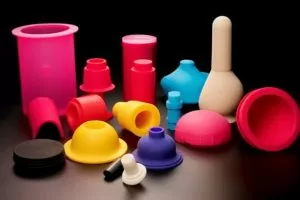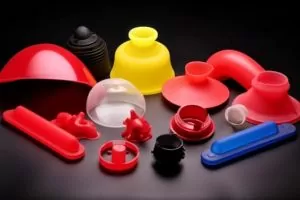Introduction
The aerospace industry relies on various manufacturing processes to produce components that can withstand the rigorous demands of flight. One such manufacturing technique that plays a pivotal role in this sector is silicone rubber compression molding; this technique allows for the creation of resilient components with exceptional performance characteristics. In this article, we’ll examine its significance within aerospace manufacturing as well as give an overview of our content and purpose of this article.
Silicone rubber compression molding offers numerous benefits that make it the preferred choice for aerospace applications. From its ability to withstand extreme temperatures, flexibility, chemical resistance, and electrical insulation properties to electrical isolation properties; silicone rubber compression molding has long been utilized by industry. By understanding its intricate process we can appreciate its role in producing reliable components with improved performance for aerospace systems.

Through this article, we will explore silicone rubber compression molding’s process, its advantages, its applications in aerospace manufacturing, types of compression molds available for this technique and key questions about this essential manufacturing technique. Ultimately, by the time this article concludes you will have gained a deeper knowledge of silicone rubber compression molding’s essential role in meeting stringent aerospace industry requirements – let’s embark on this adventure and discover its realm.
II. Understanding Silicone Rubber Compression Molding Process
A. Definition of Silicone Compression Molding
Silicone compression molding is a manufacturing process that involves the compression of a preheated silicone rubber compound inside a mold cavity. This technique utilizes both heat and pressure to shape and cure the silicone material, resulting in the production of various components used in aerospace applications. By subjecting the silicone material and metal mold cavity to compression, it is transformed into a durable and elastic product with the desired shape and properties.
B. Explanation of the Compression Molding Process
The compression molding process begins with the preparation of the silicone material. The raw silicone rubber compound, which may include additives or fillers, is preheated to a specific temperature to enhance its flowability and moldability. Once the injecting raw rubber material reaches the desired temperature, it is placed in the mold cavity.

The mold consists of two halves, an upper and a lower, that close together under high pressure. The combination of pressure and heat causes the silicone material to flow and fill the entire cavity. This ensures that the material conforms to the shape of the mold, capturing all the intricate details and features of the final component.
C. Introduction to Liquid Silicone Rubber (LSR)
Liquid silicone rubber (LSR) injection molding is a type of silicone rubber compound that is frequently used in compression molding. LSR is a two-part material consisting of a liquid base and a curing agent. The two parts are mixed together in precise proportions to initiate the curing process. LSR offers excellent flow characteristics, allowing it to fill complex mold cavities with ease. This makes it particularly suitable for applications that require intricate shapes and fine details.

D. Vulcanization and Curing of Silicone Material
During the compression molding process, the silicone material undergoes vulcanization and curing. Vulcanization is a chemical process that transforms the raw silicone compound into a crosslinked network of polymer chains. This crosslinking enhances the material’s strength, durability, and resistance to heat, chemicals, and other environmental factors.
Curing is achieved by applying both heat and pressure to the silicone material inside the mold cavity. The combination of elevated temperature and applied pressure promotes the crosslinking reaction, allowing the material to solidify and take the shape of the mold. The duration of the curing process depends on factors such as the material composition, thickness of the component, and desired properties raw rubber material.
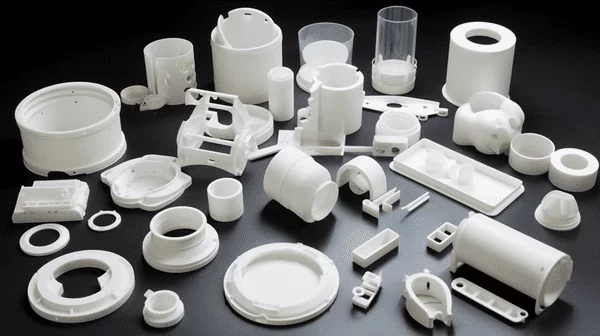
By employing the compression molding process and carefully controlling the vulcanization and curing stages, manufacturers can produce silicone components with precise dimensions, excellent mechanical properties, and the ability to withstand the demanding conditions of aerospace applications.
III. Advantages of Silicone Rubber Compression Molding
A. Temperature Resistance for Extreme Conditions
Silicone rubber compression molding offers exceptional temperature resistance, making it well-suited for aerospace applications that involve exposure to extreme heat or cold. Silicone components can maintain their integrity and functionality even in environments with wide temperature variations. This attribute ensures the reliable performance of aerospace systems in demanding conditions.
B. Flexibility and Elasticity for Dynamic Forces and Vibrations
Silicone rubber exhibits remarkable flexibility and elasticity, allowing it to withstand dynamic forces, vibrations, and movements without compromising its structural integrity. This inherent flexibility makes silicone compression-molded components ideal for aerospace applications where parts may experience constant stress, strain, and mechanical forces.
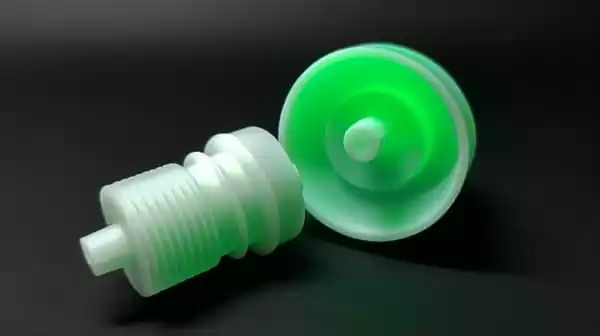
C. Chemical Resistance to Various Substances
Silicone rubber is inherently resistant to a wide range of chemicals, including fuels, oils, solvents, hydraulic fluids, and other substances commonly encountered in aerospace environments. This chemical resistance ensures that silicone compression-molded components maintain their performance and functionality, even when exposed to harsh or corrosive chemicals.
D. Electrical Insulation Properties for High Voltage Environments
Silicone rubber exhibits excellent electrical insulation properties, making it suitable for aerospace applications that require reliable performance in high voltage or electromagnetic fields. Silicone compression-molded components effectively isolate and protect electrical systems, ensuring safe and efficient operation.
E. Aging Resistance and Longevity
Silicone rubber compression-molded components demonstrate exceptional resistance to aging and degradation over time. They are resistant to UV radiation, ozone, and other environmental factors, allowing them to maintain their performance and appearance over an extended service life. This longevity contributes to the reliability and durability of aerospace systems, reducing the need for frequent component replacements.

IV. Applications of Silicone Rubber Compression Molding in Aerospace
A. Gaskets, Seals, and O-rings
Silicone rubber compression molding is widely utilized in the aerospace industry for the production of gaskets, seals, and O-rings. These components play a critical role in maintaining the integrity of aerospace systems by providing reliable sealing and preventing the leakage of fluids or gases. Silicone rubber’s flexibility, temperature resistance, and chemical resistance make it well-suited for these sealing applications.
B. Dampeners and Shock Absorbers
Silicone rubber compression-molded dampeners and shock absorbers are used in aerospace applications to mitigate vibrations, impacts, and dynamic forces. These components help protect critical systems and equipment from excessive wear and damage, ensuring smoother and more stable operations.
C. Insulation and Protection Components
Silicone rubber compression molding is employed to create insulation and protection components for aerospace systems. These components are used for wire harnessing, cable protection, shielding, and encapsulation, providing electrical insulation and ensuring the safe and reliable operation of electrical systems in the aerospace industry.
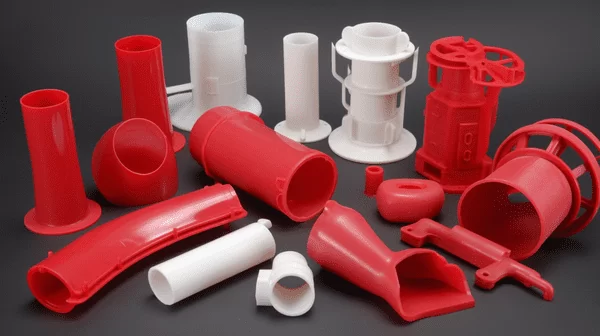
D. Composite Materials and Integration with Other Materials
Silicone rubber compression molding allows for the integration of silicone components with other materials, such as metals and composites. This capability enables the production of advanced aerospace components with enhanced performance and functionality. Silicone rubber can be integrated into composite materials, providing additional benefits such as improved durability, chemical resistance, and flexibility.
E. Engine Components and Automotive Industry
Silicone rubber compression-molded components find extensive use in aerospace engine applications. These include gaskets, seals, and O-rings used in engine systems, where temperature resistance and reliable sealing are crucial. Additionally, silicone rubber components are also employed in the automotive industry for engine seals, gaskets, and other applications that require similar performance characteristics.
F. Medical Equipment and the Medical Industry
Silicone rubber compression molding plays a significant role in the medical industry, specifically in the production of medical equipment components. Silicone rubber’s biocompatibility, chemical resistance, and durability make it an ideal material for applications such as medical seals, gaskets, and other precision components used in medical devices and equipment.
V. Different Types of Compression Molding Molds
A. Open Molds for Simple Shapes
Open molds are a common type of compression molding molds used for producing components with relatively simple shapes. These molds consist of two plates that create a cavity when closed. Open molds are well-suited for straightforward geometries and are easy to handle and operate. They are often used when the design requirements of the component do not necessitate complex features or intricate details.
B. Closed Molds for Complex Shapes and Details
Closed molds are utilized when producing components with complex shapes and intricate details. They consist of multiple plates that create a cavity when closed. Closed molds enable precise control over the shape, dimensions, and surface finish of the final product. These molds are designed to capture fine features and intricate details, ensuring high-quality and accurate reproduction of the desired component.

C. Transfer Molds for Precise Material Flow Control
Transfer molds are employed when precise control over material flow and distribution is required. These molds feature a separate chamber, or pot, where the silicone material is placed. The material is then transferred from the pot into the mold cavity using a plunger or other mechanisms. Transfer molds allow for accurate and controlled material flow, ensuring consistent and uniform distribution within the mold cavity. This process is particularly useful for components that require precise material placement and control.
D. Injection Molds for Faster Production and Complex Geometries
Injection molds are similar to transfer molds in terms of material delivery, but they differ in the method of material injection. In injection and molding methods, the silicone material is injected directly into the mold cavity through a system of runners and gates. This method enables faster production cycles and is suitable for components with complex geometries, intricate details, and the need for high production volumes. Injection molds are versatile and allow for the creation of components with intricate features and complex shapes.
The choice of compression molding mold type depends on the complexity of the component’s design, the required precision, and the production volume. Open molds are suitable for simpler shapes, while closed molds excel in capturing intricate details. Transfer molds provide precise material flow control, and injection molds offer faster production and the ability to create complex geometries. By selecting the appropriate bulk molding compound type, manufacturers can achieve the desired quality and efficiency in the silicone rubber molding process.
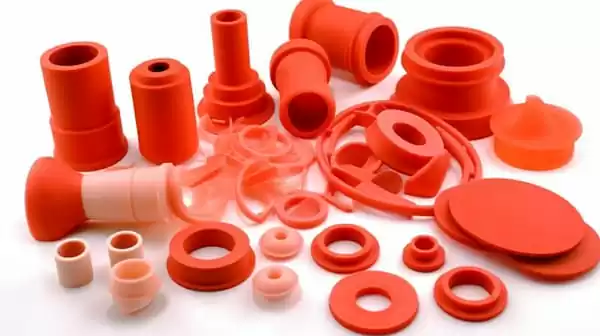
Conclusion
In conclusion, silicone rubber compression molding plays a significant role in the aerospace industry, offering numerous advantages and a wide range of applications. The significance of this manufacturing process lies in its ability to produce high-quality components that meet the stringent requirements of aerospace applications.
The advantages of silicone rubber compression molding, including temperature resistance, flexibility, chemical resistance, electrical insulation properties, and aging resistance, make it a preferred choice for aerospace components. These properties enable silicone rubber to withstand extreme conditions, dynamic forces, vibrations, and exposure to various substances, ensuring the reliability and longevity of aerospace systems. uncured rubber
Silicone rubber compression molding finds application in various areas within the aerospace industry. Gaskets, seals, O-rings, dampeners, shock absorbers, insulation components, and composite materials all benefit from the unique properties of silicone rubber. Additionally, silicone rubber components are employed in engine applications, the automotive industry, and the medical sector, showcasing the versatility and wide-ranging impact of this manufacturing process.
Silicone rubber compression molding is instrumental in meeting the demanding requirements of the aerospace industry. Its ability to produce components with precise dimensions, complex shapes, and high-quality surface finishes ensures the integrity and performance of aerospace systems. By harnessing the benefits of this technique, manufacturers can achieve reliable and durable components that excel in the challenging and rigorous aerospace environments.
In conclusion, silicone rubber compression molding serves as a vital manufacturing process in the aerospace industry, providing exceptional performance and meeting the diverse needs of aerospace applications.
As the aerospace industry continues to advance, silicone rubber compression molding will play an increasingly crucial role in shaping the future of aerospace components. It will enable the production of innovative designs, enhanced materials, and improved manufacturing efficiencies, ensuring that the aerospace industry continues to push the boundaries of technology and performance.
By understanding the significance, advantages, and applications of silicone rubber compression molding, we gain a deeper appreciation for its impact on the aerospace industry. With its remarkable properties and capabilities, silicone rubber compression molding continues to contribute to the advancement of aerospace systems, meeting the ever-evolving demands of the industry.

